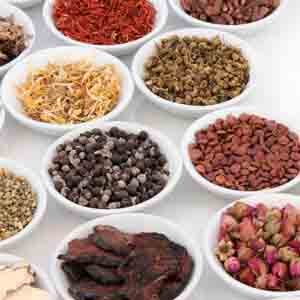What is expected with Massage Therapy?
Registered Massage Therapy
All of our massage therapists are highly educated, well-trained, highly qualified, and registered with the CMTO (College of Massage Therapists of Ontario).
Since our massage therapists are registered with the CMTO, our massage therapy is based on anatomical and medical knowledge, and treatment plan is based on an assessment and health history. The assessment consists of various tests to determine the condition of your muscles and joints.
According to the result of assessment, various specialized movements of the hands, over the skin or cloths, will be applied. These hand movements are called techniques in general term, and the techniques we use to help your condition is not limited to conventional massage techniques. We will apply various types of other techniques of modern massage techniques as well as traditional Chinese Tuina techniques as needed. If our massage therapist holds acupuncture permit, acupuncture treatment will also be considered.
Massage can help many conditions...
Musculoskeletal & Overuse Injuries
Musculoskeletal Injuries
Scar Tissue Healing
Wounds and Burns
Contusions
Strains and Sprains
Cruciate and Meniscal Injuries
Whiplash
Overuse Injuries
Plantar Fasciitis
Periostitis and Compartment Syndromes
Tendinitis
Bursitis
Frozen Shoulder
Postural & Joint Dysfunction
Postural Dysfunction
Pes Planus (Flat Foot)
Iliotibial Band Contracture
Patellofemoral Syndrome
Hyperlordoris
Hyperkyphosis
Scoliosis
Joint Dysfunction
Hypermobility and Hypomobility
TMJ Dysfunction
Degenerative Disc Disease
Osteoarthritis
All types of joint pain
Nervous System
Central Nervous System
Hemiplegia
Multiple Sclerosis
Parkinson’s
Cerebral Palsy
Spinal Cord Injury
Peripheral Nervous System
Radial Nerve Lesions
Ulnar Nerve Lesions
Median Nerve Lesions
Bell’s Palsy
Compression Syndrome of Peripheral Nerves
Thoracic Outlet Syndrome
Carpal Tunnel Syndrome
Piriformis Syndrome
Functional Problems
Anxiety and Depression
Insomnia
Torticollis
Tension Headache
Migraine
Sinusitis
Chronic Bronchitis
Emphysema
Asthma
Hypertension and Cognitive Heart Failure
Constipation
Irritable Bowel Syndrome
Inflammatory Bowel Disease
Fibromyalgia
Chronic Fatigue Syndrome
Osteoporosis
Call 905-303-3011 or Book an Appointment Online
What massage therapy can do
Massage therapy applies hands-on techniques on the body’s soft tissue to improve circulation, relieve tension, reduce stress, relieve anxiety, improve sleep, and promote relaxation throughout the entire body.
Soft tissue is all the tissues in the body that connects, surrounds or supports internal organs and bones, and includes muscles, tendons, ligaments, fat, fibrous tissue, lymph and blood vessels, fascia, synovial membranes, and nerves.
Massage therapy performed on a healthy person increases muscle flexibility and relaxation, and decreases stress levels. The psychological effects are the increased well being that usually occurs with positive touch.
Most common benefits of massage therapy include:
- Reduced muscle tension
- Improved circulation
- Stimulation of the lymphatic system
- Reduction of stress hormones
- Relaxation
- Increased joint mobility and flexibility
- Improved skin tone
- Improved recovery of soft tissue injuries
- Heightened mental alertness
- Reduced anxiety and depression
- Strengthened immune system
- Improved posture
- Lowered blood pressure
Massage and Pain Control
Generally, massage is recognized as effective in reducing or managing pain. Pain from nerve receptors in the body is processed in the spinal cord and travels to the brain – the thalamus and cortex – where it is modulated. The person’s perception of pain can be partially controlled by signals transmitted from the cerebellum down the spinal cord. These signals inhibit pain signal transmissions at the level where they enter the spinal cord, decreasing the person’s level of pain sensitivity.
Massage affects pain in several different ways. Massage can address the source of the pain and stop the nociceptive (painful) nerve firing. Often there is a cycle of pain that begins with tissue ischemia. Tissue ischemia, or reduced local circulation, results from sustained muscle contraction (spasm) and fascial restriction. This reduces the blood flow and oxygen to the tissues in the constricted area, resulting in pain. The mechanism of ischemic pain is not clearly understood. It may be due to a reduction of available oxygen, a build-up of metabolites or a release of histamines or bradykinin from the constricted muscles cells.
Massage can break the pain cycle and eliminate the original source of the pain by increasing blood flow to the ischemic tissue. This increase in circulation to the affected tissue is created by mechanical pressure of massage techniques on the veins and lymphatics. Cutaneous stimulation from the pressure may also cause reflex vasodilation of the blood vessels, further improving circulation. Pain from muscle spasm can also be reduced through techniques that can affect proprioceptors, such as movement of limbs, stretching and direct compressing of the tissue. — from Clinical Massage Therapy, Rattray








